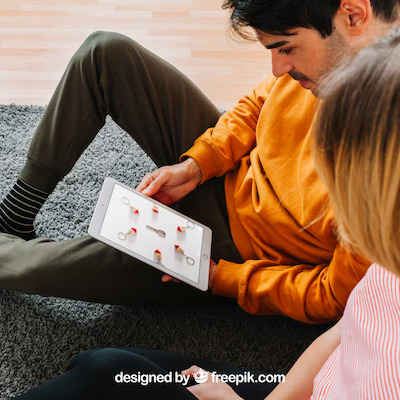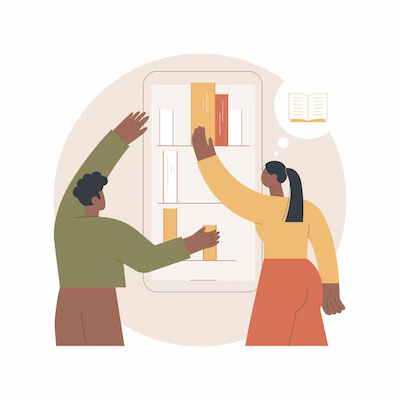
Emotional design is an approach that aims not only to meet the functional needs of users but also to create experiences that resonate on an emotional level. By incorporating elements that touch both the heart and the mind, designers can develop products and services that are not only used but also remembered and appreciated. This emotional connection is crucial in a world saturated with options, where customer loyalty can be easily gained or lost.
Through emotional design, professionals have the opportunity to explore user psychology, understanding how emotions influence decisions and behaviors. This enables them to create more meaningful and impactful experiences that not only meet user expectations but exceed them. In this article, we will explore how emotional experiences in design work, the advantages of using this approach, and how to create experiences that truly touch the user.
How Emotional Experiences in Design Work
Emotional experiences in design function through a deep understanding of human behavior and the emotions that guide that behavior. Designers use this understanding to create interfaces and interactions that not only inform but also delight. Emotion is a powerful driver of decision-making, and when designers are able to evoke positive feelings, they not only create an enjoyable experience but also build a lasting connection with the user.
One of the key elements of emotional experiences is storytelling. When a product or service is presented through a story, users can connect with it on a deeper level. Stories have the power to engage people, make them feel part of something bigger, and consequently increase empathy and identification with the brand. This transforms the interaction into something more than just a transaction; it becomes a memorable experience.
Moreover, emotional design also relies on aesthetics and usability. A visually appealing interface that is easy to use can generate feelings of satisfaction and pleasure. The harmony between form and function is essential to creating experiences that resonate emotionally. Designers must consider not only how users interact with the product but also how they feel while doing so. This holistic approach is key to the success of emotional design.
Lastly, emotional experiences in design are often driven by feedback and interaction. When users feel that their opinions are valued and their experiences are being heard, they become more engaged. Positive feedback can reinforce pleasant emotions, while negative feedback, when handled properly, can be transformed into an opportunity for improvement. This dynamic creates a continuous cycle of enhancement and emotional connection between the user and the brand.

Advantages of Using Emotional Design in User Experiences
Using emotional design in user experiences brings a number of significant advantages that can positively impact brand perception and customer loyalty. First and foremost, by creating emotional connections, brands can stand out in a saturated market. When users feel emotionally attached to a product or service, they are more likely to choose that brand over others, even if competing options offer similar features.
Another advantage of emotional design is its ability to increase user satisfaction. Experiences that evoke positive emotions, such as joy, surprise, or nostalgia, tend to be more memorable. This not only makes users return to the product or service but also motivates them to recommend it to others. Word-of-mouth generated by positive emotional experiences can be one of the most effective forms of marketing.
Additionally, emotional design can improve user retention. When users emotionally connect with a brand, they are less likely to abandon it. Emotional loyalty results in a stronger relationship, where users not only use the product but also become brand advocates. This creates a community around the product, where users feel part of something meaningful.
How to Create Experiences that Touch the User with Emotional Design
-
Understanding Empathy in Design: Empathy is the foundation of emotional design. To create experiences that touch users, designers need to put themselves in their shoes and understand their emotions, desires, and needs. This involves research, interviews, and usability testing to capture the nuances of human behavior.
-
Incorporating Visual Storytelling in Interactions: Visual storytelling is a powerful tool in emotional design. By telling a story through visual elements, such as illustrations, videos, and animations, designers can create an engaging narrative that resonates with users, making the experience more memorable and impactful.
-
Using Sensory Design for Emotional Impact: Design is not limited to visual elements; it can also engage other senses. Incorporating sensory elements such as sounds, textures, and scents can enhance the emotional experience. For example, an app that uses pleasant sounds can create a relaxing atmosphere that improves the user experience.
-
Fostering Emotional Connectivity with the User: For users to feel emotionally connected, it is important for brands to communicate authentically and transparently. This can be done through personalized messages, quick responses to feedback, and building a community around the brand.
-
Increasing User Engagement with Emotional Interaction: Emotional engagement can be achieved through interactions that provoke emotional responses. This can include gamified elements such as rewards and challenges that encourage users to engage more deeply with the product or service.
-
Applying User-Centered Design for Better Results: User-centered design is essential to the success of emotional design. This means placing the needs and emotions of users at the heart of the design process, ensuring that every decision made aims to improve the user experience.
Creating experiences that touch the user through emotional design is not a simple task, but it is incredibly rewarding. By focusing on emotions and human connections, designers can create products and services that truly make a difference in people’s lives, leaving a positive and lasting impact.

Did You Enjoy Learning About Emotional Design?
Emotional design is a truly fascinating and transformative approach that revolutionizes the way we interact with products, services, and experiences in our daily lives. At its core, emotional design goes beyond meeting mere functional needs—it focuses on creating profound emotional connections that resonate with users on a deeper, more personal level. By tapping into the psychology of users and understanding the emotional triggers that influence their decisions, emotional design empowers designers to craft experiences that not only fulfill practical expectations but also create lasting impressions. These connections are far more impactful than simply delivering a useful product; they foster a sense of belonging, trust, and loyalty, which can significantly enhance the relationship between users and brands.
When you apply the principles of emotional design, you aren’t just making functional products or services—you are creating memorable experiences that users cherish. It is through these emotionally charged experiences that users develop a genuine affinity for the brand or service, which leads to an increase in long-term loyalty, engagement, and customer satisfaction. As the world becomes increasingly competitive, standing out in a sea of similar options requires more than just meeting functional needs—it demands that brands create emotional resonance. This resonance strengthens the emotional bonds that encourage customers to return and recommend the product or service to others, effectively turning users into loyal advocates.
Furthermore, emotional design is not limited to just products or services; it can extend to all interactions a customer has with a brand. From the way a website makes users feel to the interaction with customer service, emotional design influences every touchpoint of the customer journey. As a result, emotional design doesn’t just improve individual interactions—it has the potential to transform entire brand experiences, ensuring they leave a positive and lasting impact.
Frequently Asked Questions
What is emotional design?
Emotional design is creating products and experiences that make you feel something. It touches your emotions and creates connections.
Why is emotional design important?
It’s important because it connects you to the product. This makes you remember it and want to use it again. Emotional experiences stay in your memory.
How does emotional design affect usability?
When you connect emotionally, usability improves. You feel more comfortable and happy using the product. This makes everything easier.
What are some examples of emotional design?
Examples include colors that help you relax, nostalgic images, and interactions that make you smile. Everything is meant to touch your emotions and create a unique experience.

